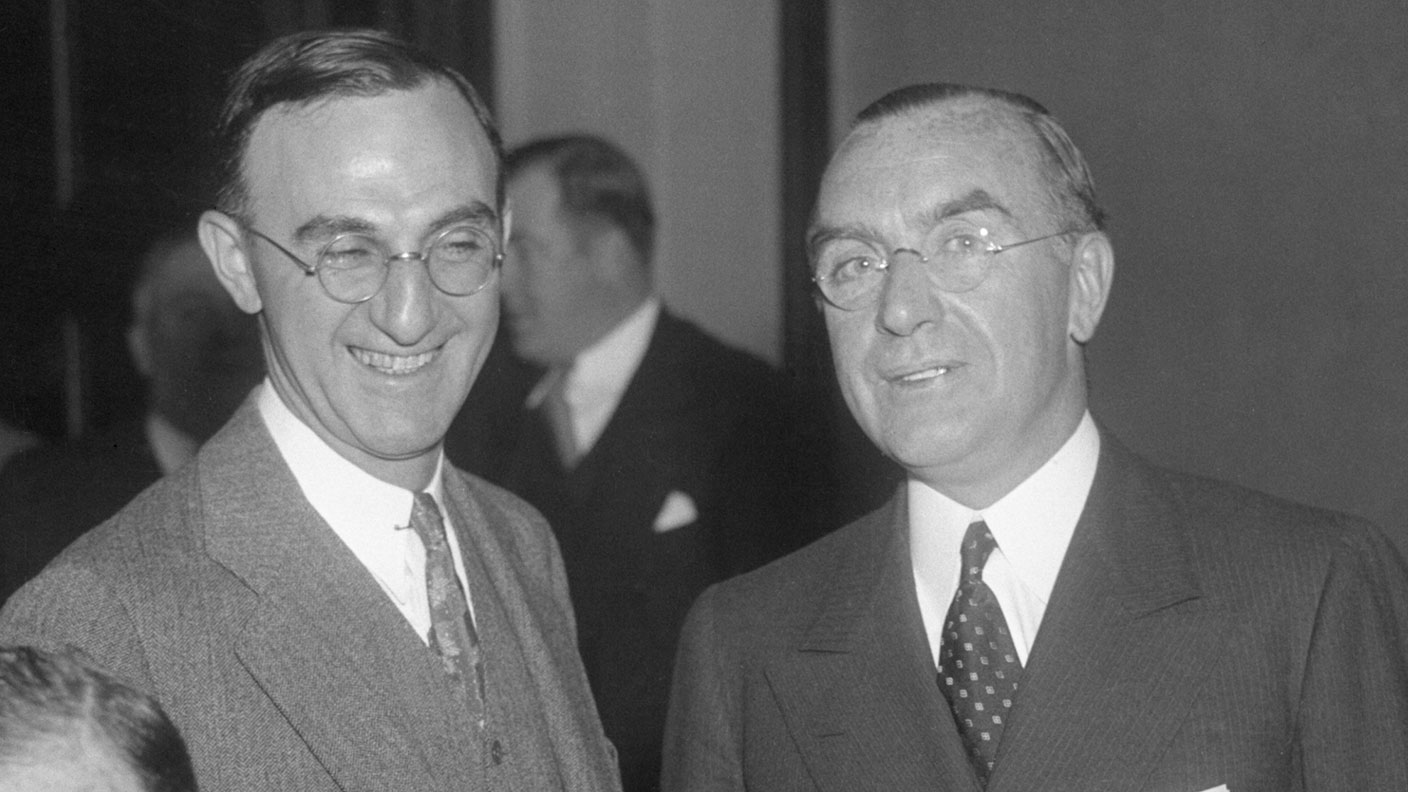Great Frauds in History: Michael Meehan’s market manipulation
Stockbroker Michael Meehan manipulated the markets, driving stock prices up and making a mint.


Michael Meehan was born in Blackburn, Lancashire, in 1892, but grew up in New York. After leaving school to become a messenger boy he graduated to selling theatre tickets.
Owing to the connections he made while selling tickets, he managed to secure a seat on the New York Stock Exchange by 1925.
Before the Wall Street Crash his brokerage firm, M.J. Meehan & Company, employed 400 people with nine offices, including one on a liner, and even after 1929 he was wealthy enough to buy his son a seat on the New York Stock Exchange for $130,000 (the equivalent of $1.99m today).
MoneyWeek
Subscribe to MoneyWeek today and get your first six magazine issues absolutely FREE

Sign up to Money Morning
Don't miss the latest investment and personal finances news, market analysis, plus money-saving tips with our free twice-daily newsletter
Don't miss the latest investment and personal finances news, market analysis, plus money-saving tips with our free twice-daily newsletter
How did the scam work?
Meehan was regarded as an expert market manipulator. He would assemble a group of investors who would agree to buy and sell the stock of a listed company between each other, giving the impression of large trading volume.
This would give the illusion of widespread public interest in the company, driving the share price up. Once the price rose high enough, they would suddenly sell out, causing the stock to collapse. One such “pool” helped drive the stock of the Radio Corporation of America (RCA) up from $85 in 1925 to $549 in 1929, making the pool $5m ($74.6m).
What happened next?
The Wall Street Crash and the election of Franklin D. Roosevelt in 1932 led to passage of the Securities and Exchange act in 1934, which outlawed most market manipulation, including the tactics that had made Meehan rich.
Nonetheless, Meehan tried to use similar “matched orders” tactics to push the price of Bellanca Aircraft in 1935 from $1.75 to $5.50 within a few months and then maintained the price while the company issued another 100,000 shares.
After a long investigation, regulators found Meehan guilty of most of the charges and banned him from every exchange that he belonged to, ending his career as a broker.
Lessons for investors
After the pool ended in October 1935, Bellanca’s price fell back down to $1.75 again, leaving those who had bought the additional shares with losses of around $300,000 ($5.6m today). While pools and matched orders have been eliminated from most major markets, illiquid micro-cap shares are still vulnerable to being manipulated in this way. So, while a rapid price rise or increase in volume can be a sign of momentum, be sure a stock’s fundamentals are solid enough to support its price.
Get the latest financial news, insights and expert analysis from our award-winning MoneyWeek team, to help you understand what really matters when it comes to your finances.

-
 Investors will reap long-term rewards from UK equities
Investors will reap long-term rewards from UK equitiesOpinion Nick Train, portfolio manager, Finsbury Growth & Income Trust, highlights three UK equities where he’d put his money
-
 The graphene revolution is progressing slowly but surely
The graphene revolution is progressing slowly but surelyEnthusiasts thought the discovery that graphene, a form of carbon, could be extracted from graphite would change the world. They might've been early, not wrong.
-
 The political economy of Clarkson’s Farm
The political economy of Clarkson’s FarmOpinion Clarkson’s Farm is an amusing TV show that proves to be an insightful portrayal of political and economic life, says Stuart Watkins
-
 The most influential people of 2025
The most influential people of 2025Here are the most influential people of 2025, from New York's mayor-elect Zohran Mamdani to Japan’s Iron Lady Sanae Takaichi
-
 Luana Lopes Lara: The ballerina who made a billion from prediction markets
Luana Lopes Lara: The ballerina who made a billion from prediction marketsLuana Lopes Lara trained at the Bolshoi, but hung up her ballet shoes when she had the idea of setting up a business in the prediction markets. That paid off
-
 Who is Christopher Harborne, crypto billionaire and Reform UK’s new mega-donor?
Who is Christopher Harborne, crypto billionaire and Reform UK’s new mega-donor?Christopher Harborne came into the spotlight when it emerged he had given £9 million to Nigel Farage's Reform UK. How did he make his millions?
-
 Why Trustpilot is a stock to watch for exposure to the e-commerce market
Why Trustpilot is a stock to watch for exposure to the e-commerce marketTrustpilot has built a defensible position in one of the most critical areas of the internet: the infrastructure of trust, says Jamie Ward
-
 The return of Erik Prince, America's notorious mercenary
The return of Erik Prince, America's notorious mercenaryErik Prince, founder of the controversial private military group Blackwater, was shunned for pushing the boundaries of legality. He has re-established himself
-
 Big Short investor Michael Burry closes hedge fund Scion Capital
Big Short investor Michael Burry closes hedge fund Scion CapitalProfile Michael Burry rightly bet against the US mortgage market before the 2008 crisis. Now he is worried about the AI boom
-
 Chen Zhi: the kingpin of a global conspiracy
Chen Zhi: the kingpin of a global conspiracyChen Zhi appeared to be a business prodigy investing in everything from real estate to airlines. Prosecutors allege he is the head of something more sinister